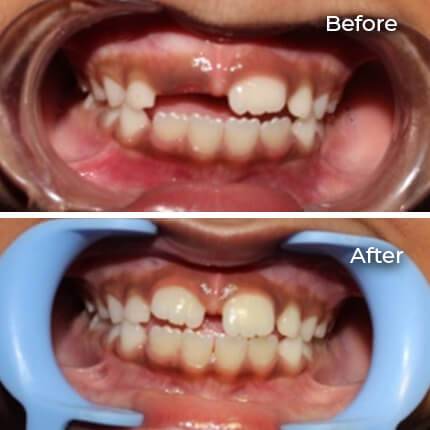Treatment

Tooth chipped with no pain:
A chipped tooth which is very mild at the level of enamel is of cosmetic concern and a small composite restoration(dental filling) will suffice.
A chip extending into the dentin is considered like the skin peeled off during a scratchy fall. It should ideal be bandaged immediately to provide good healing. The same applies to the tooth. It should be closed with a dental filling like composite and if it is close to the pulp it should be protected with calcium hydroxide.

Tooth chipped with pain:
Indicates the chip is extending into the nerve region. This needs immediate attention by the dentist. The treatment plan varies based on your reporting time, root development, age of the person(e. t. c). Get to the dentist right away and if it is a child take them to a nearby good pediatric dentist. Usually it requires stabilization with a splint, pulp protection, cvek's pulpotomy (etc).

Tooth discolouration or colour change:
if the tooth is changing after one to six months of trauma or fall it indicates that the nerve and blood vessel in and around the tooth is loosing its life slowly. It will be confirmed either with an xray or a sensation assessment test. If confirmed that the tooth has lost its life the dentist will suggest you to have a root canal treatment of the tooth. Most of the time discoloured tooth will not provide pain and even if pain is manifested, it is of a very low grade discomfort. So low grade pain is a sign of a big hidden problem in your tooth. So take attention immediately, sometimes there is a mild pus ooze, gum boil, loosening (etc) around the tooth.

Tooth hypoplasia:
Hypoplasia or white discoloration indicates a white spot in one of your front tooth. It could be of cosmetic concern to you. A brief history will reveal either the baby tooth had incurred a trauma or it would have suffered long standing decay. Either of this will result in this hypoplasia. A suitable solution or some times no solution will be required in this scenario. Just mere reassurance will suffice.

Crown - root fractures:
The level at which the root fracture has happened will determine the type of treatment for that particular tooth. A good intra oral periapical xray (IOPA) will help us diagnose and treat the problem in the best way possible.

Splinting and it's importance:
Most of the tooth tooth trauma injuries will be suggested to have a splint done. A splint is nothing but a wire fragment used to stabilize the loosened tooth to promote healing. The most commonly used and widely accepted tooth splint is an acid etched composite resin splint kept for 2-3 weeks (pic)

Delayed or early eruption of teeth:
In a child this scenario is quite common. A completely dislodged front baby tooth is usually not recommended to be reimplanted back for various scientific reason. So the underlying permanent tooth can erupt into the mouth either delayed of its time of arrival or the other way around (i. e) earlier than the expected time of arrival. So patience and meticulous follow up is mandatory.

Curved tooth (Dilaceration)
This is also a scenario which happens due to tooth trauma in the early stage of life. An early hit in the baby tooth will dislodge the permanent tooth bud inside (This is called indirect injury) resulting in a curved formation of the crown or root of the permanent tooth resulting in a condition called dilaceration. Treatment plans vary again according to the type of dilacerations. Get to a good dentist to sort this issue for you.








